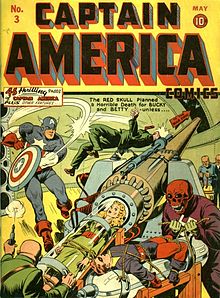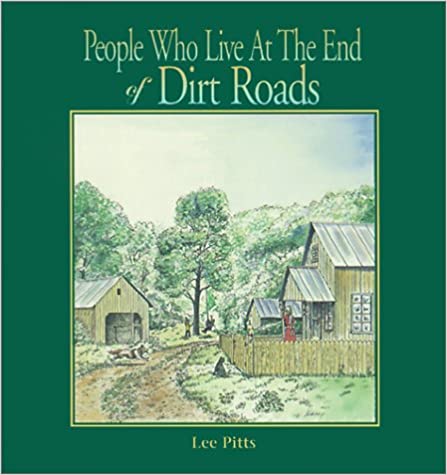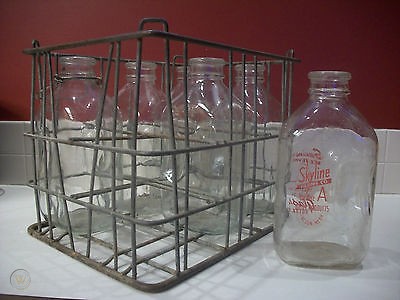Are you a Hero or a Villain?
Are you a Hero or a Villain?
 When I was 12 years old, I experienced two events that changed the course of my life: (1) I got my own paper route; and (2) my mom drove me to the bank and opened up a checking account in my name. The reason she opened the account was because she didn’t want the job of writing a check every week to the local newspaper (Peoria Journal Star). When we got home, she taught me how to write checks, and when the first bank statement arrived in the mail, she taught me how to reconcile the account.
When I was 12 years old, I experienced two events that changed the course of my life: (1) I got my own paper route; and (2) my mom drove me to the bank and opened up a checking account in my name. The reason she opened the account was because she didn’t want the job of writing a check every week to the local newspaper (Peoria Journal Star). When we got home, she taught me how to write checks, and when the first bank statement arrived in the mail, she taught me how to reconcile the account.
Every Wednesday, I knocked on the doors of my customers and collected money for the newspapers. Every Friday, I met the Journal Star representative at Stafford’s Dairy (where I picked up the newspapers every day), and gave him a check for the previous week’s newspapers.
So there I was, 12 years old with money in my pocket and my own checking account. Until then, when I wanted to respond to an ad and order a product that was advertised in a comic book, I had to ask my mom to write a check for me to send in with the order form.
The problem I encountered was my mom usually resisted my efforts to order products that were advertised in comic books. Although I was always ready and willing to cover the amount of the check, she routinely asked to see the ad before she agreed to write the check. Most of the time, she would question me as to why I “needed” to buy the product. Since my explanation usually wasn’t good enough for her, she would refuse to write the check and then proceed to tell me she wasn’t going to allow me to “waste” my money.
Mom didn’t realize it, but when she opened up a checking account for me she relinquished the power to veto my buying decisions. Once I had the ability to write my own checks, any time I wanted to order something in the mail, I simply completed the order form and mailed it in with a check. Then I made sure that I was the first one to check the mail every day so I could grab my package when it arrived. That way, I didn’t have to justify my purchase with my mom. (As a side note, the first product I ordered on my own was the Charles Atlas bodybuilding course that was advertised each month in all of the comic books. If you’re a man between the ages of 45 and 65, you probably know exactly which course I’m talking about.)
Anyway, last weekend one of my teenage daughters asked me if I would take her and her sisters to see the new Marvel Comics movie, Captain America: The First Avenger. Of course, being the loving and thoughtful father that I am, I agreed. So on Sunday, I treated Georgette and four of our daughters to an afternoon at the theater.
Over the past 12 years, several of the characters that were originally created by Marvel Comics have made their appearance on the big screen. The most popular Marvel characters include Spiderman, Captain America, the Hulk, the X-Men, Ironman, Thor, and the Fantastic Four. Marvel is currently working on
The Avengers, a movie that is scheduled to be released next summer. The Avengers will feature at least four of the Marvel characters in the same movie: Ironman, Thor, Captain America, and the Hulk.
When I was growing up in the 60’s and 70’s, there were two main comic book companies that competed head-to-head for the money and attention of boys: Marvel Comics and DC Comics. Both companies featured larger than life action heroes who, in the comic world, fought off evil villains and captured the hearts of beautiful women.
Some of the most popular DC Comics characters were Superman, Batman, Wonder Woman, Flash, Aquaman, and the Green Lantern.
Over the years, it has been the Marvel characters that have been the most enduring. The primary reason for this is because Stan Lee and the other Marvel writers and artists created much more realistic story lines and characters than the writers and artists at DC Comics. The Marvel characters were better developed and were “more human” than the DC Comics characters. This made it easier for comic book fans to personally identify with the characters.
Another difference was the way Marvel portrayed its villains. Although the Marvel villains were evil and corrupt, there was usually a sympathetic and complex back story that provided legitimate reasons why the villain turned to the dark side. This generated compassion and sympathy for the villain and created conflict within the reader. On the one hand, the reader wanted to hate the villain, while on the other hand, the reader was willing to be more forgiving of the villain because of a deep understanding as to what contributed to the villain’s downfall.
If you’ve seen any of four X-Men movies that were released over the past 12 years, you know what I’m talking about. The director of three of the four movies, Brian Singer, did an excellent job of developing the Marvel characters. He made it extremely difficult to hate the main villain, Magneto. In fact, there are times during the movies when the viewer has sympathy for Magneto’s cause. The reason for this is because Magneto’s character has been developed so that the viewer experiences what he went through as a child that caused him to ultimately choose an evil course of action. Unlike most villains, he’s not presented as a wretched lowlife that just happened to appear on the scene. Although he has special powers, he comes across as a real human being with real human emotions, just like you and me.
The director of Captain America, Joe Johnson, did a good job of following the Marvel formula of developing characters that we can all relate to, except for the Villain (which was known as “Red Skull” in the comic books). Johnson missed his opportunity to follow the Marvel formula, because he failed to develop a credible back story that would have generated sympathy for the villain. In fact, he didn’t give the viewer any other choice but to hate Red Skull. The movie would have been better if the viewer was allowed to experience the environment and conditioning Red Skull was exposed to as a child, along with the reason he turned to the dark side. Having said that, if you like superhero adventure movies, you should make the time to see Captain America. It’s one of those old fashioned movies where good ultimately conquers evil.
So why is it that we like stories and books and movies where the hero conquers the villain and saves the day? I’ve talked about the Marvel formula for creating great characters, but what most people don’t realize is that Almighty God had a formula that He used when he created our souls. Within that formula is the ability and desire for each of us to become a great hero. You and I were created by God to be heroes – heroes to our families, our friends, the people we work with, our neighbors. Every day we have a choice. Will we choose to provide heroic service to others or will we choose to serve ourselves? The daily choice to serve others has the potential to make us real heroes, while the choice to consistently serve ourselves could eventually turn us into real villains.
What choice do you make every day? What choice did you make today?




2 Comments
One of the points brought up in “Are you a Hero or a Villain?” was that when the reader had a deeper understanding as to what contributed to the villain’s downfall, the reader could be more compassionate, more sympathetic, and more forgiving of the villain. It was even possible for the reader to pull for the villain and want things to turn out good for him in the end. Since God has complete understanding as to why each of us do what we do, even why we commit the sins that we commit, He is compassionate, sympathetic, and willing to forgive each of us. He is pulling for us, and He wants things to turn out good for each of us in the end. He continually calls us to repentance and conversion, as He wants us to spend eternity in Heaven.
Very good point Diane. I appreciate you sharing your observation.
Take care,
Harry